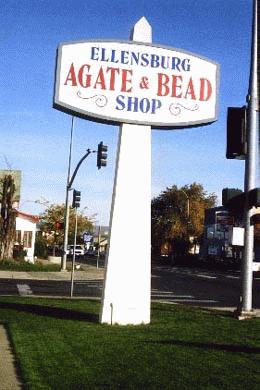In March 1905, Austin Mires, an attorney who served as Ellensburg’s first mayor, extracts bright blue agates from the agate beds around Ellensburg and sends them to Seattle to be set into rings.
Agate beds abound in the Teanaway basalt layers throughout the Kittitas region. Teanaway Basalt is the reddish-colored basalt dating from the Eocene epoch (50 million years ago) of geologic history. In the Ellensburg agate fields it is mixed with the darker brown Columbia Plateau basalt from the more recent Miocene epoch (24 million years ago).
The Ellensburg formation dates from the Miocene epoch, and is largely composed of easily eroded rock and rock debris. This “biscuit” topography, combined with the movement over time of the Yakima River and its tributary creeks, encouraged the formation of geodes and agates.
Although the agate beds between Thorp and Ellensburg yield a variety of agates, it is the brightly colored “Ellensburg Blue” agates for which the beds are famous. These agates are unique to this region.
John Prentiss Thomson, whose father’s jewelry store first promoted the stones, reported that local Native American tribes eschewed the agates for use in arrow tips, although they used them in trade with whites. Local sheepherders at the turn of the nineteenth century reported the sky blue rocks prominently visible in the hillsides.
About a decade after Austin Mires had Ellensburg Blue agates set as jewelry, he and his wife began to cut and polish the stones in their home.
By May 1913, local native people had shown jeweler J. N. O. Thomson where to find the agates. Local news stories spurred an agate-hunting fad among tourists, which continued through the 1940s.
Virtually all of the original blue agate beds are now (2003) part of private land. Many of the beds are cultivated, making agate hunting nearly impossible. Farmers occasionally turn up the stones while plowing.

